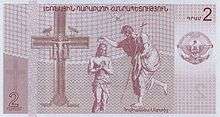List of circulating currencies
There are 180 currencies recognized as legal tender in United Nations (UN) member states, UN observer states, partially recognized or unrecognized states, and their dependencies. However excluding the pegged (fixed exchange rate) currencies, there are only 130 currencies (which are independent or pegged to a currency basket). Dependencies and unrecognized states are listed here only if another currency is used in their territory that is different from the one of the state that administers them or has jurisdiction over them.

Criteria for inclusion
A currency is a kind of money and medium of exchange. Currency includes paper, cotton, or polymer banknotes and metal coins. States generally have a monopoly on the issuing of currency, although some states share currencies with other states. For the purposes of this list, only currencies that are legal tender, including those used in actual commerce or issued for commemorative purposes, are considered "circulating currencies". This includes fractional units that have no physical form but are recognized by the issuing state, such as the United States mill,[upper-alpha 1] the Egyptian millieme,[upper-alpha 2] and the Japanese rin.[upper-alpha 3] Currencies used by non-state entities, like the Sovereign Military Order of Malta, scrips used by private entities, and other private, virtual, and alternative currencies are not under the purview of this list.
List of circulating currencies by state or territory
Yellow background means a given currency is pegged to another currency (details).
Notes
| Numismatics |
|---|
.png) |
| Currency |
| Circulating currencies |
|
| Local currencies |
|
Fictional currencies Proposed currencies |
| History |
| Historical currencies |
| Byzantine |
| Medieval currencies |
| Production |
| Exonumia |
| Notaphily |
| Scripophily |
|
|
- One cent equals ten mills.
- One piastre equals ten milliemes.
- One sen equals ten rin.
- Many of these symbols can be found in Unicode block 20A0–20, "Currency Symbols".
- This currency is not used in day-to-day commerce, but is legal tender. It is minted or printed as commemorative banknotes, coinage, or both.
- British banknotes are issued by the Bank of England and by some banks in Scotland and Northern Ireland (incl. Danske Bank). Laws on legal tender vary between various jurisdictions.[4]
- This currency code is not part of the ISO 4217 standard, but is used commercially.
- Although part of the Netherlands, the islands of Bonaire, Sint Eustatius, and Saba do not use the euro; they use the United States dollar. They are listed separately.
- The two signs "KM" and "КМ", although they may look identical depending on font, are in respectively the Latin and Cyrillic alphabets, as used in Serbian and Croatian.
- One jiao equals ten fen.
- Only coins are made for this fractional denomination. See the link on the name for details.
- These coins are pegged to the United States cent.
- One piastre equals ten fulūs and one dirham equals 10 piastres.
- Four currencies circulate in the partially recognized state of the Sahrawi Arab Democratic Republic, which claims the territory of Western Sahara. The Moroccan dirham is used in the Moroccan-administered part of the territory and the Sahrawi peseta is the commemorative currency of the Sahrawi Republic. Additionally, some de facto currencies circulate in the territory: the Algerian dinar is used in Sahrawi refugee camps in Tindouf and the Mauritanian ouguiya is used in Lagouira, which is under Mauritanian administration.
- Rappen in German; centime in French; centesimo in Italian; rap in Romansh.
- One hundred Tongan paʻanga equal one hau.
- Only used in the parts occupied by Russia or pro-Russian separatists
- One hào equals ten xu.
References
- "Field Listing: Exchange Rates". The World Factbook. Central Intelligence Agency. Archived from the original on 2015-02-15. Retrieved 2013-12-06.
- "Current currency & funds code list". Swiss Association for Standardization. As of 2016-09-13, this citation said "accessdate=2013-12-06", but the document itself said "Published July 1, 2016".
- Antweiler, Werner (2006). "Currencies of the World". University of British Columbia. Archived from the original on 2011-11-29. Retrieved 2006-12-05.
- "Banknotes". Bank of England. Retrieved 2006-12-05.
- Roman Olearchyk (5 June 2016). "Donetsk faces a creeping Russification". Financial Times. Retrieved 9 August 2016.(subscription required)
- Reporter, Staff (20 February 2019). "RBZ introduces "RTGS Dollars"". The Zimbabwe Mail. Retrieved 6 May 2019.